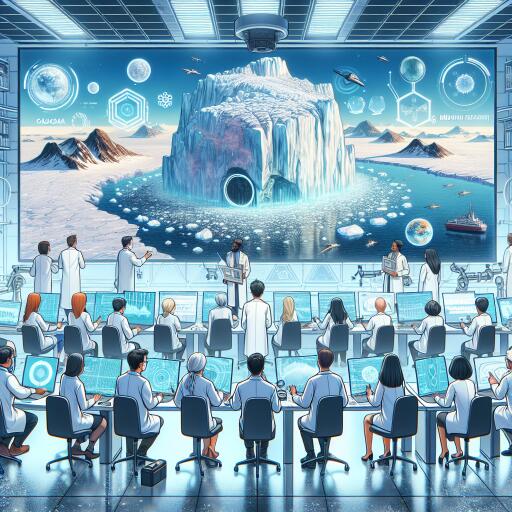
Grounding zone discovery explains accelerated melting under Greenland’s glaciers
In groundbreaking research, a team from the University of California, Irvine, and NASA’s Jet Propulsion Laboratory has shed light on the rapidly increasing rates of glacier melting in northwest Greenland, especially focusing on the Petermann Glacier. This significant work pinpoints the infiltration of warm oceanic waters beneath the ice as a critical factor, hinting at future sea-level rise projections that could significantly surpass previous estimates.
The collaborative investigation brought together an array of radar interferometry data sourced from several European satellites, effectively mapping the tidal movements affecting the Petermann Glacier. This physical observation was paired with advanced modeling efforts, utilizing the Massachusetts Institute of Technology’s general calculation model. Together, these tools tackled the complexities of predicting climate change impacts within the intricate dance of ice, ocean, and land masses, all variably influenced by both tidal forces and escalating temperatures from climate change.
An intriguing aspect of the study is the observed shifts in the glacier, which range up to several kilometers as tides ebb and flow. This revelation came alongside estimates pointing to roughly 140 meters of ice thinning observed between 2000 and 2020. Analysis showed an alarming acceleration in melt rates, jumping from an average of about 3 meters per year in the 1990s to an astronomical rate of 10 meters per year by the 2020s.
This and other similar studies highlight a paradigm shift in how interactions between the ocean and polar ice are understood. Previously, it was assumed that the boundary between ice and ocean was distinctly defined. However, it’s now evident that a much more diffuse and extensive ‘grounding zone’ exists, stretching over several kilometers wide. This zone, where seawater fluctuates with oceanic tides, experiences vigorous melting of grounded ice from below.
An important discovery from the model was the prediction of highest melt rates near the grounding zone’s mouth, attributing the significant thinning along Petermann’s central flowline primarily to warmer water and increased seawater intrusion underneath the ice. The study identified the elongated shape of the grounding zone cavity as a fundamental factor in the escalated ice melting rates. Initial modeling tied to just the warmer ocean temperatures indicated about 40 meters of thinning. However, a subsequent simulation factoring in an expanded grounding zone cavity revealed a staggering 140 meters of thinning.
This reveals that the adjustments in the grounding zone lengths have a more profound impact on melting rates than warmer ocean temperatures alone. It’s also been noted that the melting of ice in the grounding zone reduces the resistance glaciers face as they flow towards the sea, therefore quickening their retreat. This phenomenon is instrumental in refining models predicting the severity of future sea level rise.
The implications of these findings are monumental, with potential to revamp the frameworks used for ice sheet modeling and sea level rise projections significantly. It now appears that glaciers are melting at much faster rates than previously assumed when interfacing with the ocean, underscoring an urgent need for revised predictions in glacier mass loss and consequent sea-level rise.
This pioneering study was executed with support from NASA’s Cryospheric Sciences Program, representing a collaborative effort involving NASA’s extensive resources in cryospheric research.





Leave a Reply